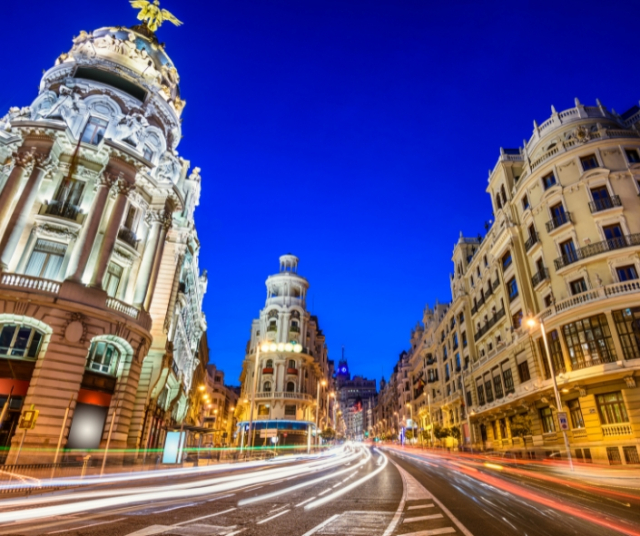Holy Week in Spain is a unique celebration that combines tradition, religious fervor and a vibrant atmosphere. During this time of year, many Spanish cities and towns are immersed in emotional processions, cultural events and a spiritual experience that attracts visitors from all over the world.
1. Seville: The Capital of Spanish Holy Week
Seville, the capital of the province of Andalusia, stands as the undisputed capital of Holy Week in Spain. Every year, this city is transformed into a vibrant scene where devotion, tradition and art are uniquely intertwined. The Sevillian processions are authentic spectacles that captivate locals and visitors alike.
From Palm Sunday to Easter Sunday, the streets of Seville are filled with a special fervor. The brotherhoods, religious organizations in charge of planning and executing the processions, parade through the labyrinth of narrow streets, squares and avenues. The steps, imposing structures that carry religious images, are authentic masterpieces carved in wood and decorated with precious details.
The procession of the Christ of Expiration and the Virgin of Hope is one of the most notable, attracting crowds that gather to witness the solemn passage of these sacred images. The atmosphere is filled with the sound of drums, bugles and arrows, creating an emotional atmosphere that surrounds the city.
The streets of Seville are decorated with Manila shawls, decorated balconies and the fragrance of orange blossom in the air. The Nazarenes, members of the brotherhoods who wear distinctive tunics and hoods, walk in silence while carrying the heavy steps on their shoulders. Tradition, faith and aesthetics merge in an emotional ballet that leaves everyone present in respectful silence.
2. Malaga: Fusion of Religion and Culture
Malaga offers an Holy Week that combines religiosity with a rich cultural heritage. The processions travel through the historic streets, where the brothers wear colorful tunics and carry impressive steps. Malaga also stands out for its additional cultural programming during Holy Week, with concerts, exhibitions and gastronomic events that complement the religious experience.
3. Granada: Tradition in a Historical Environment
Holy Week in Granada is experienced in an incomparable setting, with the majestic Alhambra as a backdrop. The processions wind through the narrow streets of the Albaicín, offering a unique experience that combines the essence of religious tradition with architectural beauty. The procession of the Cristo de los Gitanos and the Virgen de las Angustias are two of the most notable in this Andalusian city.
4. Zamora: Passion in its Pure State
Zamora, anchored in the region of Castilla y León, emerges as an unrivaled bastion of Holy Week in Spain. Recognized for the intensity and solemnity of its celebrations, this Castilian city becomes a setting where religious passion reaches its maximum expression. Every corner of Zamora resonates with the emotionality of its processions and the magnificence of its processional steps.
The narrow streets of Zamora are transformed into a spiritual journey during Holy Week, highlighting the Santo Entierro procession as one of the most notable events. On Good Friday, this moving procession fills the streets with an atmosphere of respect and reflection. The sacred images, authentic artistic jewels, are carried on the shoulders of devoted brothers, creating a visual and emotional spectacle that leaves a lasting mark on the hearts of those who witness it.
The seriousness and solemnity of the celebrations are intertwined with the historical richness of Zamora, whose churches and monuments serve as a backdrop for these manifestations of faith. The procession of the Cristo de las Injurias and the Virgen de la Soledad are notable examples of the artistic mastery and deep devotion that characterize Zamora during Holy Week.
The city is immersed in a respectful darkness, illuminated only by the light of the candles that accompany the steps. The sound of drums and funeral marches creates a unique soundtrack, intensifying the experience and adding a sensory component that elevates the solemnity of the occasion.
5. Cáceres: Holy Week in a Medieval Setting
Cáceres, declared a World Heritage Site, offers an Holy Week that transports visitors to the Middle Ages. The narrow cobblestone streets of the old town serve as the setting for processions that combine religious solemnity with the history of the city. The procession of the Black Christ and the Virgin of La Palma is one of the most emblematic of this Extremaduran city.
6. Salamanca: University and Religious Tradition
Salamanca, known for its historic university, is also a top place to experience Holy Week in Spain. The processions travel through the Plaza Mayor and other emblematic locations in the city, providing a unique fusion between religious tradition and university life. The procession of the True Cross and the Cristo de la Agonía are unmissable for those who visit Salamanca during Holy Week.
7. Córdoba: Devotion in the Mosque-Cathedral
Holy Week in Cordoba takes place in the imposing setting of the Mosque-Cathedral. The processions, marked by the sound of drums and arrows, travel through the narrow streets of the historic center. The procession of Nuestro Padre Jesús de la Sentencia and María Santísima de la Esperanza is one of the most moving in Córdoba.
8. Ferrol: Seafaring Holy Week
On the Atlantic coast, Ferrol offers a unique Holy Week with processions that have the sea as a backdrop. The procession of Jesús Nazareno is one of the most notable, with images that run through the streets of the old town and the port area. Ferrol combines religious tradition with seafaring influence, creating a unique experience.
Planning a visit during Holy Week is immersing yourself in a tradition that unites the spiritual with the cultural, creating memories that will last in the hearts of visitors. Discover the magic of Holy Week in Spain and let yourself be enveloped by the emotion of its processions and the richness of its heritage!
